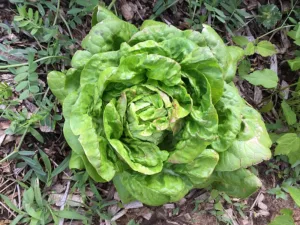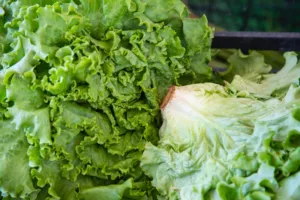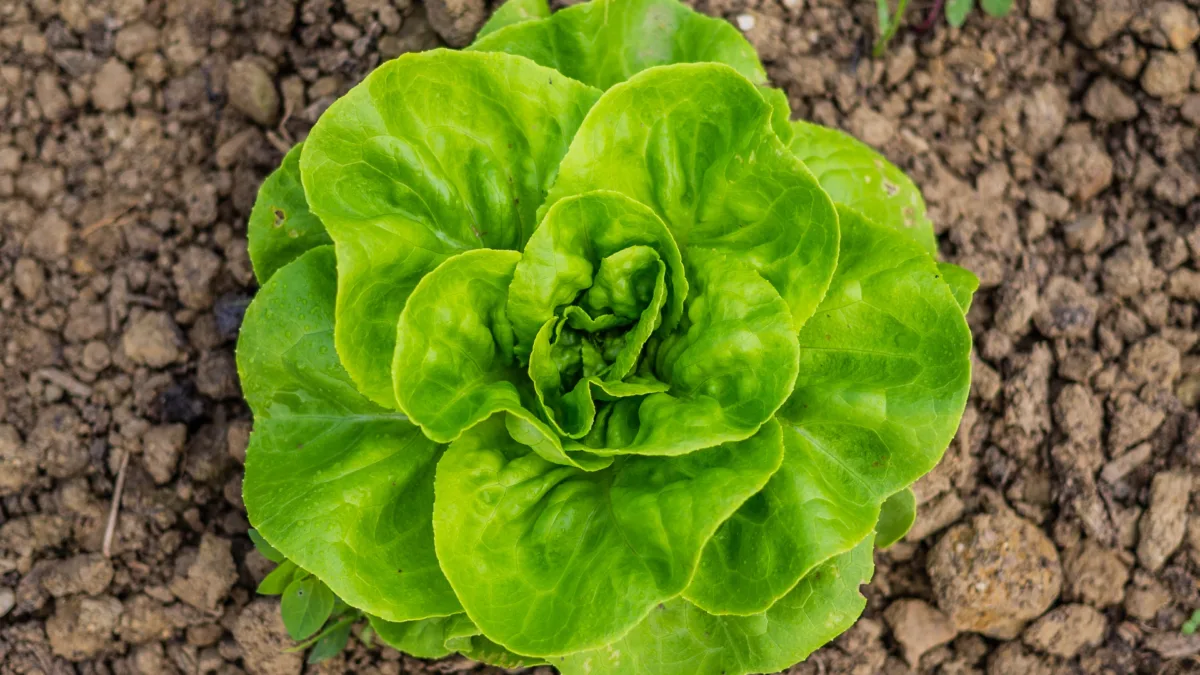Lettuce is one of the easiest vegetables to grow in your backyard. All you need is a sunny spot, fertile soil and some seeds or seedlings. If you want to know more about growing lettuce from seed or seedlings, read on!
About lettuce
Lettuce is a leafy green vegetable that’s related to cabbage and broccoli. It has a mild taste, but it can be eaten raw or cooked.
Lettuce was originally cultivated in ancient Rome, where the Romans called it “lettuce-leafed lettuce” because of its shape and color. Europeans later called this vegetable “lettuce” as well, because it had been grown there since at least 500 BC!
You can add lettuce to a sandwich, eat it raw in salads or stir-fries, or use it as a wrap for sandwiches. It also makes a great addition to any dish that needs more vegetables!
Different varieties of lettuce
When it comes to growing lettuce, there are a number of options. Some varieties are better suited for certain end-products than others. Regardless of which varieties you grow, they all have their own distinct characteristics. To choose the most productive lettuce plants for your garden, it’s important to choose varieties that are appropriate for your microclimate and latitude. Here are a few tips to choose the right varieties for your growing conditions.

Butterhead lettuce has a delicate flavor and is often less prone to bolting than other varieties. It matures in 55 to 75 days and is spaced similar to Crispheads. If you want to grow them, you should space them 12 inches apart (~30 cm) . Some varieties of this lettuce are also known as “Boston lettuce” and are greener and softer than other varieties. You can also grow red butterheads with blistered leaves. If you prefer a more mild flavor, try Bibb lettuce, which is also a subtype of butterhead.
Another popular variety is Belgian endive, with its tight, compact heads this variety adds a nice crunch to your salad. It has a bit a bitter but nutty flavor. This type matures in 110 to 130 days. You should grow them about 6 inches apart (~15 cm).

The most popular type of lettuce is probably the iceberg lettuce. It needs 80 to 90 days to mature and you should space them up to 18 inches apart (~45 cm).
Grow from seed
For a simple, low-maintenance, and fast-growing crop, growing lettuce from seed can be a great way to get started in the garden. You can use a seed tray purchased at your local garden center or make one from scratch. Regardless of the method, make sure to moisten the soil before sowing your seeds. To plant lettuce seeds, make sure they’re at least 1/4 inch deep and sown six to twelve inches apart. Keep the seeds moist by lightly scouting the soil and watering them evenly.
You want to consider the type of soil you plan to use. The best soil is one that has a high level of compost. You should carefully trim back the outer leaves every few days. You’ll want to wait a day or two between harvestings.
If you don’t have a greenhouse, you can start lettuce seeds on a windowsill in a 40-cell tray. Once the lettuce seedlings have grown big enough, you can transplant them into the ground. You can also mix compost into the soil to nourish them.
When to grow lettuce
While lettuce can be planted year-round, the best time to plant it is when there is no chance of frost. In most climates that is in early spring or late winter. For a head lettuce, you should plant seedlings in the spring after the last hard frost date. If you don’t want to wait until spring to start growing lettuce, you can also start seedlings indoors three to four weeks before the last frost date.
The first step in planting lettuce is to decide how deep and wide of a row you want to plant it in. Depending on the type of lettuce, you may want to plant the seeds an inch or two deep and space them evenly. For example, compact loose-leaf lettuce should be planted about four inches apart, whereas romaine lettuce should be planted about eight inches apart. In addition, you may want to add organic mulch to the top soil. This will help retain moisture and keep the soil cool. After planting the seeds, be sure to water thoroughly.
How to plant
To plant lettuce, you must prepare the soil properly. Soil should be fertile and well-drained. A pH of 6.0 to 7.0 is ideal, but you can add compost or fertilizer if necessary.
Fertilizers are a good idea if you have very poor soil or if it’s been a very long time since the last time you fertilized your plants.
Watering
Watering lettuce is essential to the health of the plant, and it needs the proper amount of moisture to survive. As a seedling, lettuce needs to be watered frequently, but not too frequently. The seeds are small and shallow, so watering too frequently can damage them. Instead, use a light watering and mulching technique to ensure seedlings get the proper moisture level.
In addition, lettuce needs water if they’re exposed to hot sun for extended periods of time or are growing in a clay soil. In these conditions, excess water may back up. Before watering, be sure the soil is dry and check the leaves for softness. If the leaves are yellow or soft, the plants need more water. To test whether lettuce is dehydrated, dig up a finger-thick piece of soil and touch it to the lettuce plant’s base.
When watering lettuce, aim the water spray at a downward angle. The soil must be evenly moist to support the roots of the plant. Depending on the type of soil, watering cans should be used only once per week. Avoid overhead watering because it can cause excess moisture to accumulate on the leaves of the plant.
Harvest
One of the easiest ways to harvest lettuce is to cut off the outer leaves at the base. Pick leaves a couple of inches long. It is important to remove the leaves close to the base of the plant. This will allow the plant to grow and produce more leaves. This will ensure that you have fresh greens for weeks.
Another method is to harvest the whole plant by either cutting the stem or pulling the entire plant by its roots.
So there you have it! All the details about how to grow lettuce. I hope this article has helped you understand more about growing your own food. If you’re ready to get started on your own lettuce harvest, I would be happy to hear about your success (or failures) in the comment section.

